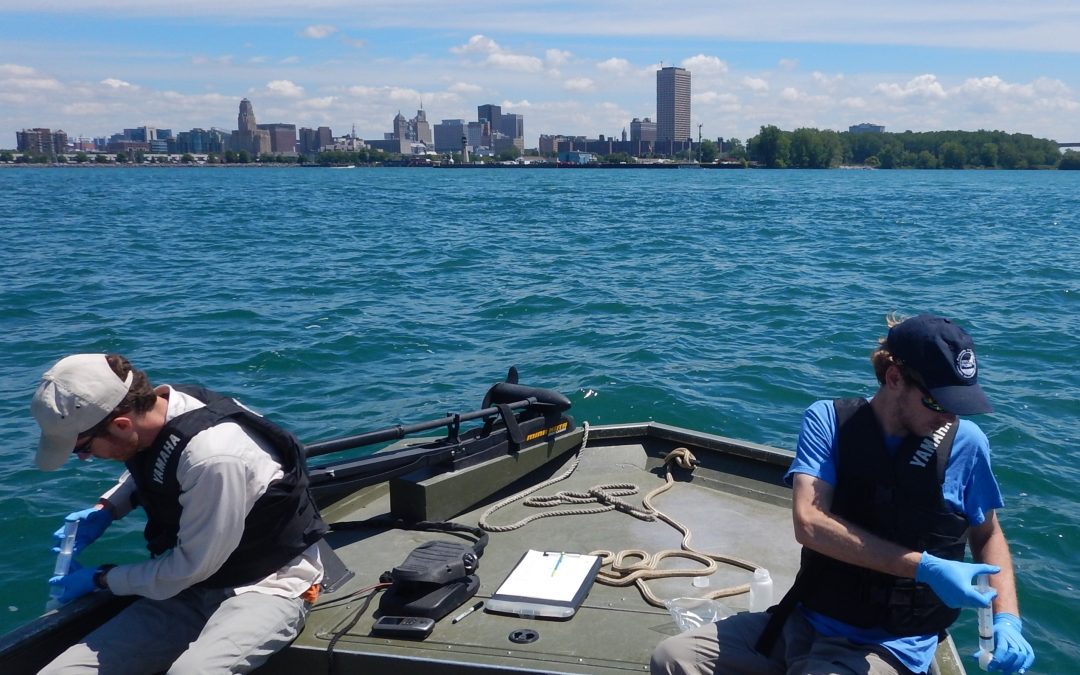Surveying for aquatic invasive species is difficult, especially in large, open bodies of water like the Great Lakes. The tools used in traditional surveying including nets, traps, electrofishing and rake tosses can miss early infestations that may consist of only a few individuals. However, when surveying for invasive species, we want to find new infestations as early as possible and as such, WNY PRISM is always looking for innovative ways to assist our partners with invasive species surveying.
In July, we got that opportunity. WNY PRISM and staff from the Great Lakes Center helped Dr. Paul Simonin, a visiting researcher at Cornell University, collect and preserve water samples from the Buffalo Harbor. These water samples will be analyzed for the DNA of various invasive species that could pose a threat to Lake Erie. When water samples are collected and analyzed for DNA, researchers refer to it as collecting environmental DNA, or eDNA.
Check out this short video for more information on eDNA sampling. Video Credit: NIVA Inc.
eDNA allows researchers to detect the presence of a species even if they never see the plant or animal they are searching for. When organisms exist in an area, their DNA can be found in, and extracted from, their environment, in this case the water. This method is highly sensitive and can be used to detect species before they reproduce to nuisance levels, which in turn reduces the amount of money and time spent on invasive species surveying and management.
As part of this study, Dr. Simonin and his team extract DNA from water samples taken from harbors in Lake Erie and Lake Ontario in search of early detection invasive species. They are also developing a novel method to analyze these water samples. This new method uses a single water sample to accurately detect the DNA of multiple species, which would greatly reduce the costs associated with eDNA surveys. In this study, they focus on nearly 20 aquatic early detection species including hydrilla, water lettuce and silver carp.
The crew left on a Great Lakes Center (GLC) research boat from the GLC Field Station in the mid-morning and had a beautiful day for collecting samples with sunny skies, a light breeze and calm waters. Water samples were first collected from the Buffalo River near the General Mills factory and later by the breakwall farther into Lake Erie. Though analyzing these water samples may be complex, the sample collection method was quite simple. Three water samples were collected in plastic bottles at each site. Water was passed through a filter and the filters were placed in a solution to prepare them for analysis in a lab.

All said and done, 15 water samples were collected, and the sampling trip took just over two hours. WNY PRISM sees eDNA sampling as a useful tool for efficiently gathering information about various aquatic invasive species in Lake Erie and other waterbodies in western New York. We will follow Dr. Simonin’s research in the hopes of using their improved, cost-effective method in the future to enhance our knowledge about the presence of aquatic invasive species in western New York.
If you are interested in reading about the results of Dr. Simonin and his team’s study, sign up for our listserv. We will send out an email link with the findings of their study when it becomes available.
This article was written by Ryan Elliott, 2019 Invasive Species Management Assistant.


